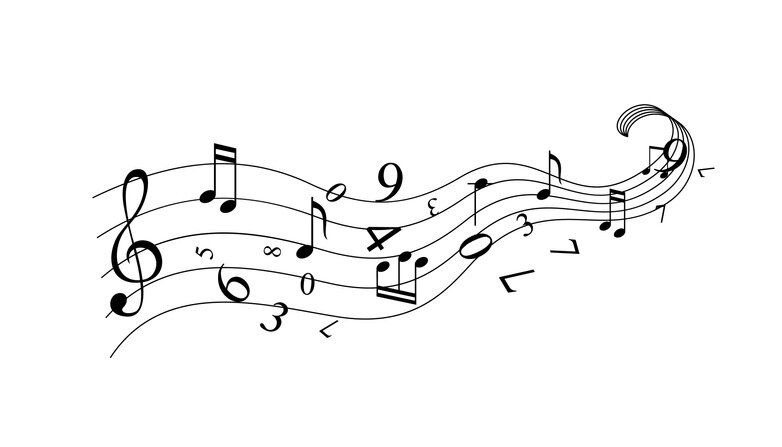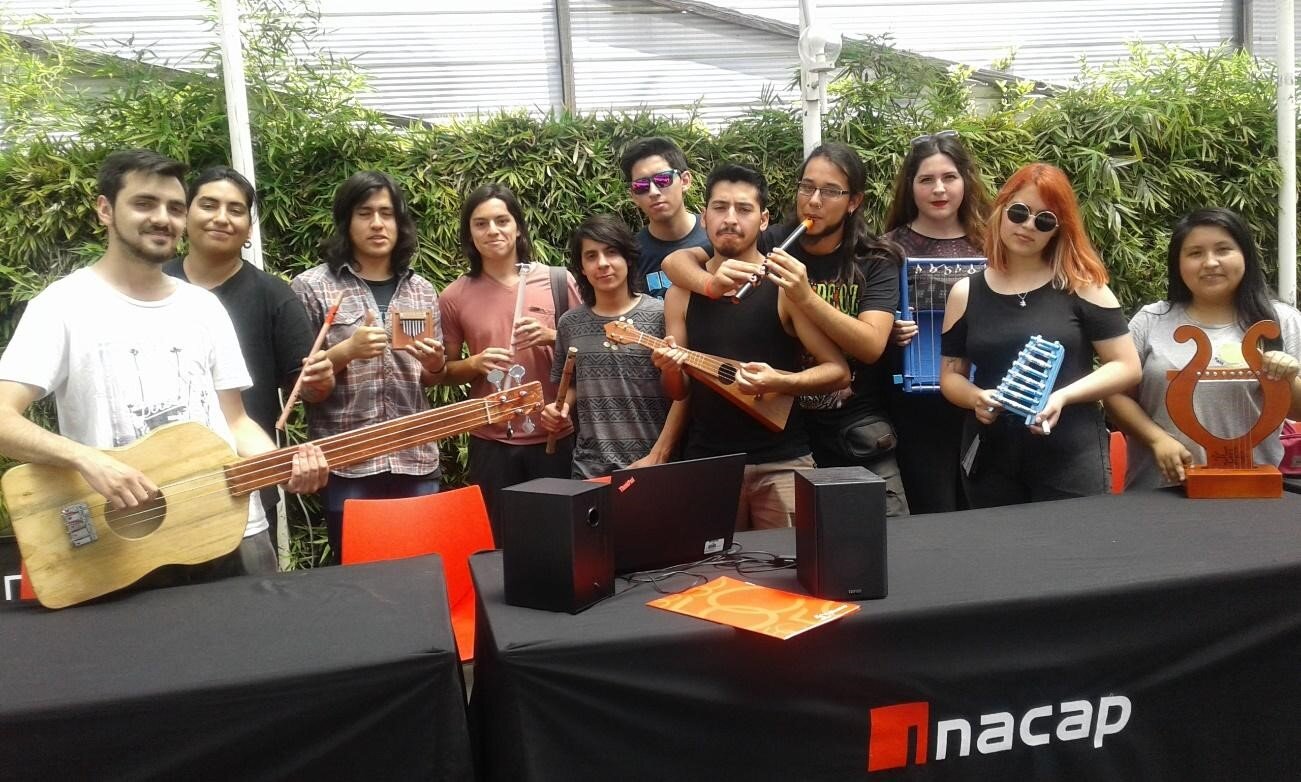“Students did not see a clear relationship between mathematics and their specialty.”
Several years ago, I was asked to teach the subject “Mathematics for Humanities” in the Pedagogy in Musical Arts Pedagogy program at the Technological University of Chile Inacap. Not being a math teacher, my challenge was to pull mathematics into this teaching discipline in Music and improve the passing and dropout rates of this course. As a sound engineer, I could relate mathematics and physics to music, and with a bachelor’s degree in Education, use all the applicable learning theories. So, I decided to accept the challenge.
The task was not easy, as the students in this program had poor grades in mathematics and did not see a clear relationship between mathematics and their specialty; therefore, the number of dropouts during the semester was significant. How do you make them see that music is eminently mathematical or that as good musicians, they were also excellent mathematicians?
“The most important thing was to prioritize the learning of mathematical concepts and procedures concerning the context of the career, but above all applied to reality.”
In her research work Reflection and Creativity: Training Methods of the Prycrea Program, Dr. América González, a clinical psychologist, formulated a series of megacriteria that should be sustained all educational levels. They are:
-
Interaction and dialogue as favorable conditions for learning
-
Co-protagonism in the learning
-
Meaning of the learning
-
The learning of key concepts and procedures rather than extensive information
-
Creativity is a critical transformation to generate something new and culturally valuable
Considering this reference, I analyzed the situation and problem raised by the Technological University of Chile (Inacap) School of Humanities. I decided to use these megacriteria for the course in question and thus face the proposed challenge.
First decisions
One of the first actions taken was to analyze the syllabus of the subject and question its structure. It stood out that the first unit involved solving mathematical problems and then continued with reasoning and proportions, algebraic manipulation, equations, and polynomial functions. To solve mathematical problems, one must have a primary mastery of algebra, formulate an equation to identify the unknown and known data, understand how they relate, and solve the problem. So, the course was reorganized to leave this learning unit to the end.
However, the most questionable thing was that nowhere was it shown how to establish the relationship between mathematics and music. The available teaching materials did not include examples applicable to the teaching of music except for tasks for high school teachers. What kind of mathematics should a teacher handle?
An analysis was made in the first year of this experience, producing significant results for decision-making: 47% of students reported having a basic level in mathematics, 41% an insufficient level, and 71% confessed to having problems learning it. Most recognized many relationships between music and mathematics, but they could not explain it.
Mathematics and music
I worked on a project to seek a relationship between the course units and aspects of music and teaching work. I explained to the students that the musical scales are nothing more than vibrating elements, proportions, and oscillation frequencies. Without going any further, I explained that the diatonic scale was formulated by Pythagoras 2,500 years ago from the long ratio of a tensioned string. Precise mathematical relationships define not only scales but also rhythm and harmony. I reminded the students that the program they were in aims to train teachers and, therefore, they must be able to calculate weighted averages, medians, modes, variances, and standard deviations.
“Most of the students recognized that there was a relationship between music and mathematics, but they could not explain it.”
All the material used during the course was redesigned, including guides and support material with examples applicable to the students’ specialties. The evaluation process included summary tasks and exams to complete the course. Consistent with leaving math problem resolutions to the end of the semester, a Project-Based Learning activity was designed. Each student in the course had to build a musical instrument using the theories that were reviewed. It could be an accordion or an aerophone; the fundamental idea was to apply Pythagoras’ diatonic scale theory. To do this, they had to use the A440 tuning app. To verify their projects, the students had to draw up a written report and present their instruments as a product. The instrument was subjected to several quantitative measurements, including tuning. After this, each student had to present their instrument to the university community at an exhibition set up in the main offices’ courtyard. They had to explain the mathematical theory behind the construction of their instrument to whoever approached the exhibition.
The results were highly satisfactory. Not only did the course passing and dropout rates improve, but, in the words of the students themselves, the experience had been far from the trauma that the learning of mathematics had always seemed.
The mathematics of social problems
Because the results of the project were well received, the recipe was repeated in subsequent years. We applied the same strategy to a different discipline far from the artistic realm: social work.
While the specialty was different, the initial situation was very similar: a class of students struggling with learning math and a consequent animosity towards it.
In this case, the critical unit also covered reasons and proportions and, in particular, percentages. The strategy was to apply these concepts to innumerable social indicators used regularly in exercising the profession. This is how the indicators for poverty, births, mortality, the elderly, and data related to violence against women or domestic violence, among others, supported the fundamental issues that were emphasized. It is not a question of explaining a relationship literally with factors; instead, with concepts relevant to the context of the career and, above all, applied to reality. Mathematics ceased to have a purpose in itself and took on the role of a tool to understand social phenomena.
For the final evaluation, the students had to do a quantitative micro-study. They chose a topic of interest from a proposed list. It included topics such as quality of life for the elderly, immigration and discrimination, social security in Chile, public health, access to higher education, overcoming poverty, ability to acquire their own home, citizen security, rights of indigenous peoples, domestic violence, sexual diversity, and gender.
First, they had to choose a population, define a sample size, specify at least one dependent and one independent variable, and do simple processing, applying the learning during the semester. The results had to be presented in a written report with demanding formal aspects, especially regarding the use and management of the bibliography that supported the decisions and findings.
The results have been fascinating since the students, through this work, could demonstrate their commitment to social issues and apply the mathematics that caused them so much fear at the beginning of the course.
Final reflections
In this experience, one can verify the application of four of the megacriteria raised by Dr. González. First, there is the co-protagonism from which the students learn, not only by class participation in an active modality but also by relevancy to what they must learn and what they want to learn. The significance of the learning is also present. Where meaning originates, there is education, and that significance is achieved when the person connects in his mind, substantively and not arbitrarily, new information with the relevant pre-existing aspects in his knowledge structure, thus, motivating him.
One of the most emphasized aspects was prioritizing the learning of key concepts and procedures. All those countless exercise guides that did not connect mathematics to the students’ career and human work were removed.
Finally, in the career of Music Pedagogy, the final project allowed students to develop their creativity because one of the aspects to evaluate was the level of innovation included in the construction of the instrument. In Social Work, the motivational aspect of choosing a topic of interest stands out the most.
In summary, mathematics teachers and academicians who teach core training subjects must adjust the evaluation criteria to the competencies required in the graduation profile for the discipline in which they teach their courses. Include motivational and emotional aspects, make the student the protagonist, and, in the case of mathematics, lower the heavy and negative load that burdens mathematics education from the early years of the student’s academic training. For no reason can math classes be the same, regardless of the subject being taught.
About the author
Justo Andrés Concha Abarca (justo.concha@inacapmail.cl) is a sound engineer and holds a bachelor’s degree in Education. He is currently a professor at the Universidad Tecnológica de Chile – Inacap, Ñuñoa headquarters, and the Arcos Professional Institute. He has 28 years of teaching experience in higher education. His topics of interest are technological development in the audio and acoustics field, history of sound registration, electroacoustic design, and methodologies of education, learning, and evaluation.
References
González, A (2001) Reflexión y creatividad: Métodos de indagación del programa Prycrea. Accessed from: http://biblioteca.clacso.edu.ar/ar/libros/cuba/cips/caudales05/Caudales/ARTICULOS/ArticulosPDF/0724G049.pdf
Edited by Rubí Román (rubi.roman@tec.mx) – Observatory of Educational Innovation.
Translation by Daniel Wetta.
This article from Observatory of the Institute for the Future of Education may be shared under the terms of the license CC BY-NC-SA 4.0 
)
)




)